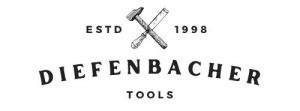Which are the best carving tools for the beginner?
We carry basic sets of carving gouges from both Dastra and Two Cherries. Check out our tool sets page for our selection of chisel and carving knife sets. We recommend starting with a beginning set and building your tool collection as you expand your carving skills and determine which tools are most useful to your style of work.
What is the difference between Two Cherries and Dastra?
Two Cherries and Dastra are both high quality, German-made brands. The most obvious difference is that Two Cherries polishes their blades to a mirror finish, while Dastra are buffed to a satin finish. In Dastra we carry a large selection of carving tools, while in Two Cherries we carry chisels, micro tools, firmer gouges, and some carving tools.
Can you send me a paper catalog?
We no longer print a paper catalog, but we can send you price lists upon request for our Dastra and Two Cherries brands. These include most of our chisels and carving gouges.
Can I visit your store?
We are a completely online business and unfortunately don’t have a physical store for customers to visit.
What kind of steel is used in your edge tools?
Our Two Cherries and Dastra tools are made of a high carbon steel hardened to Rc61. For more details, see the About Steel page on our website.
How can I understand carving tool terminology?
Here are definitions of the most common carving tool terms.
| Term | Definition |
| Gouge | Carving tool with a curved cutting edge. The most used category of carving tools. |
| Sweep | The curvature of the cutting edge of a gouge. A lower number (like #3) indicates a shallow, flat sweep while a high number (like #10) is used for a deeply curved gouge. See our sweep comparison chart. |
| Veiner | A deep gouge with a U shaped cutting edge. Usually #11 sweep. |
| Chisel | A carving tool with a straight cutting edge (usually termed #1 sweep) at right angles (or square to) the sides of the blade. |
| Skew Chisel | A chisel with the edge at a “skew” or angle relative the sides of the blade. Often termed #2 sweep. |
| V Tool or Parting Tool | A carving tool with a V shaped cutting edge. Used for outlining and decorative cuts. |
| Long Bent | A gouge, chisel or V tool where the blade is curved along it’s entire length. Handy for deep work. |
| Short Bent or Spoon | A gouge, chisel or V tool where the blade is straight with a curve at the end, like a spoon. Use for work in deep or inaccessible areas. |
| Fishtail | A gouge or chisel with a straight, narrow shank that flares out at the end to form a “fishtail” shaped tool. The narrow shaft of the tool allows for clearance in tight areas. |
| Back Bent | A spoon gouge with a reverse bent end. Used for undercuts and reeding work. |
| Palm Tools | Short (5″), stubby tools used with one hand while the work is held in the other. Great for detail and small carving. |
| Full-size Tools | 10″ to 11″ tools used with two hands. |
| Tang | The tapered part of the blade that is driven into the handle. |
| Bolster | A flared section of the blade near the tang that keeps the blade from being driven further into the handle. |
| Ferrule | A metal collar on the handle that keeps the wood from splitting when the tool is used with a mallet. Some tools have an external, visible ferrule while others have an internal ferrule. |
| Rc / Rockwell | A scale that indicates the hardness of steel. A Rockwell range of 58 to 61 is considered optimum for fine woodworking edge tools. |
How can I learn to sharpen my tools?
Well, if I could appear in your shop one day and walk you through the steps, you could learn the techniques in an afternoon. For some basic information on sharpening a straight chisel, check out our step by step sharpening tutorial. Also, Leonard Lee’s The Complete Guide to Sharpening is the next best thing to a personal guide. It is quite possible for anyone to achieve sharpening success by studying and practicing the principles clearly explained in this book.
You sell a traditional European-style brass back dovetail saw and a Japanese dovetail saw. What’s the difference?
Western style backsaws are generally heavier and have thicker blades. This is because they cut on the push stroke putting the blade in compression, which would buckle a thinner, less stiff blade. The advantage of this type of saw is ruggedness and durability. A sharp, well-made back saw will cut evenly and accurately.
The Japanese dozuki saw cuts on the pull stroke. This allows the maker to use a much thinner blade (the pull cut puts the blade in tension) with very little “set” to the teeth. The results are effortless, smooth cuts with a very thin kerf. These tools are more fragile than their Western counterparts and demand a lighter touch from the user. For more information, see our saw page.
I do not own a plane. Which one should I buy?
The key word here is “one”. If you want to start out with just one plane we recommend the low angle block plane. This tool is very handy, and with it the user can edge plane, surface plane (small boards), end grain plane and do small trimming and fitting jobs. As we state in our description of this tool, it is probably the single most useful item in the woodshop.
What type of sharpening stone should I get?
Please visit our sharpening information page for detailed information about the different types of sharpening stones.

